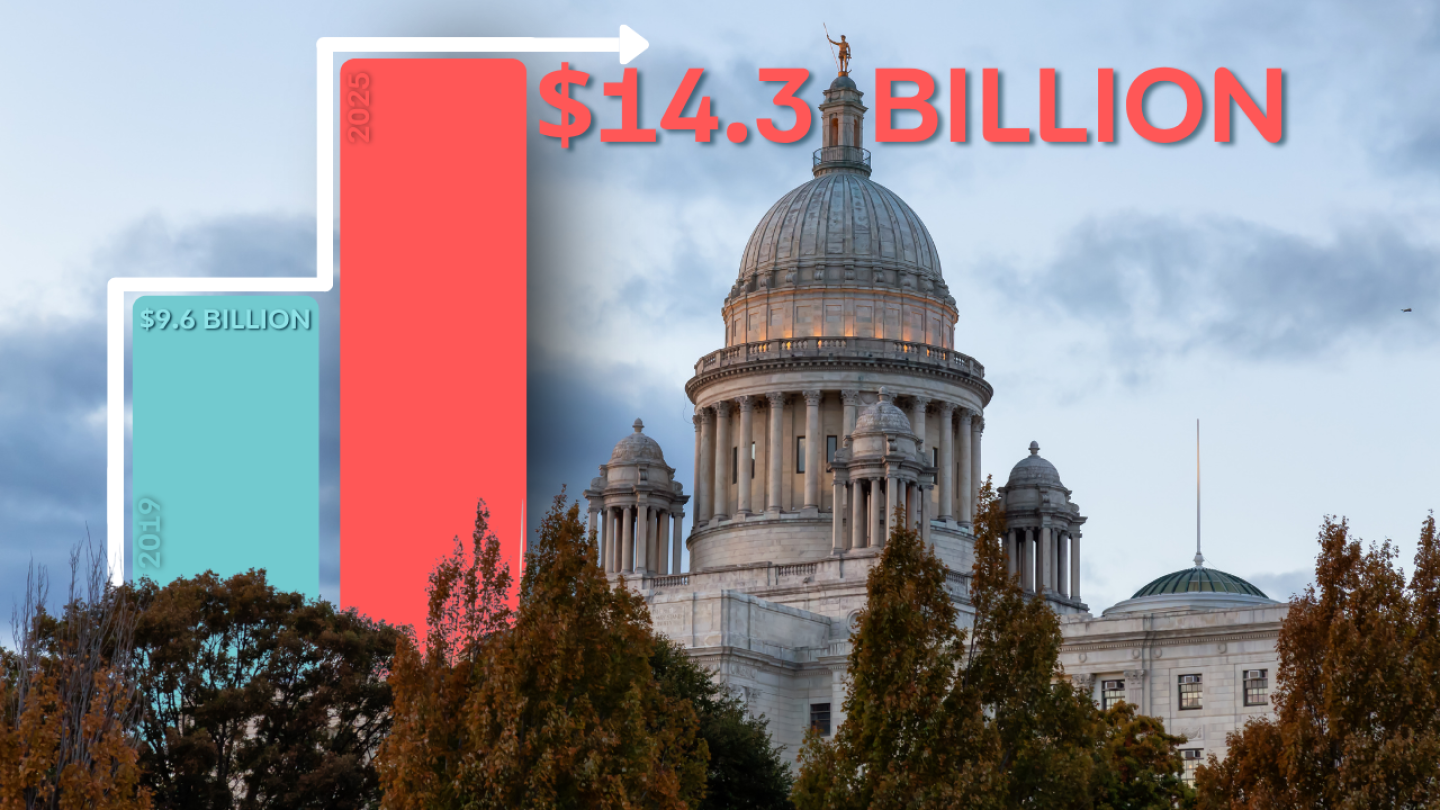Rhode Island’s state government now spends more than $14 billion a year. And recent estimates suggest the state is facing a big budget crunch for the fiscal year that starts on July 1.
So where does that money go — and how does the state pay for it? Here are five key takeaways.
1. The budget has grown sharply since the pandemic
Rhode Island’s spending has surged in recent years. In 2019, the state budget totaled $9.6 billion. In the current fiscal year, that number has climbed to $14.3 billion.
Some of that growth can be attributed to inflation. But a recent study found that even after adjusting for inflation, state spending is still up 14%.
2. Health care dominates state spending
Health care is the single largest expense in the state budget. Medicaid — the state and federal insurance program for lower-income residents — accounts for 34% of all spending.
Education is the next major category at 25%.
Altogether, more than two-thirds of the entire budget goes to health care, social services and education.
3. Washington is the biggest source of revenue
All that spending requires major revenue streams. Federal funds are the state’s largest source of income, providing $5.1 billion for this year’s budget.
The state income tax brings in nearly $2 billion, while the 7% sales tax generates about $1.7 billion.
4. State revenue is still growing
Despite concerns about the broader economy, Rhode Island’s revenue picture remains relatively strong.
New data show that tax collections this fiscal year are expected to come in about $29 million higher than originally forecast.
5. A major deficit looms
The growth in revenue isn’t enough to offset what’s ahead.
Rhode Island is currently projecting a roughly $300 million budget deficit for the next fiscal year.
Gov. Dan McKee is expected to unveil his plan to close that gap in January.







